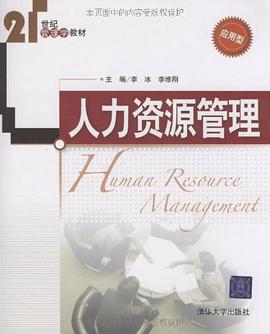

具体描述
《管理决策:理论与实践》内容简介:Management Science is of paramount importance in this effort. It provides decision makers with an extensive range of methodologies, skills, models and software tools that are necessary in order to effectively address a wide range of decision problems. More specifically, Management Science has been very helpful in management and decision making by contributing: a) A rational, systematic and robust methodology that can be followed when addressing a decision problem, b) A rich set of models, techniques and tools that can be used to structure, understand and solve the problem, and c ) A rich interface environment that helps the decision maker understand a solution, evaluate alternative solutions and come up with the preferred one. In all of these steps, the decision maker is supported by specialized easy-to-use software, which often come as additions (add-ins) to popular software like Excel, or are part of corporate Business Intelligence Systems or Decision Support Systems.
作者简介
目录信息
CHAFFER 1 INTRODUCTION TO MANAGEMENT SCIENCE
1.1 Introduction to Managerial Decision Making
1.2 Trends Affecting Decision Making Today
1.3 Key Characteristics of Management Science for Decision Making
1.4 The Use of Models for Making Decisions
1.5 The Use of Software in Decision Making
1.6 Applications of Management Science in Business
References
CHAFFER 2 AVOIDING BAD DECISIONS: The Methodology of
Decision Making
2.1 Introduction
2.2 Decision Making Traps
2.3 Decision Making Tips
2.4 The Rational Methodology for Decision Making
2.5 Identification of the Problem
2.6 Analysis of the System
2.7 Formulation of the Objectives
2.8 Initial System Design
2.9 Detailed System Design
2.10 Solution Implementation and Monitoring
References
PAPTⅡ MODELS IN MANAGERIAL DECISION MAKING
CHAPTER 3 LINEAR PROGRAMMING
3.1 Introduction
3.2 Characteristics of LP Problems
3.3 A Maximization Problem
3.4 A Trial-and-Error Approach in Solving LP Problems
3.5 Graphical Solution of a LP Problem
3.6 A Minimization Problem
3.7 General Formulation and Assumptions of LP Models
3.8 Solving LP Problems
Problems
References
CHAPTER 4 USING SOLVER TO SOLVE LINEAR PROGRAMMING
PROBLEMS
4. 1 Introduction
4.2 Introducing the Model in Excel
4.3 Solving the Problem
4.4 Understanding and Analyzing the Solution-SOLVER Reports
4.5 Solving Integer Programming Problems with SOLVER
4.6 Solving Non-Linear Programming Problems with SOLVER
4.7 Conclusions
Problems
References
CHAPTER 5 SENSITIVITY ANALYSIS IN LINEAR
PROGRAMMING
5.1 Introduction
5.2 An Example
5.3 Dual Prices in LP
5.4 Reduced Costs in LP
5.5 Changes in the Objective Functions Coefficients
5.6 Changes in the Right Hand Sides (RHS) of the Constraints
5.7 Evaluation of a New Activity
5.8 Conclusions
Problems
References
CHAPTER 6 INTEGER PROGRAMMING
6.1 Introduction
6.2 Formulating IP Problems with Binary Variables
6.3 An Investment Example
6.4 Formulating IP Problems with Fixed Costs and/or Discounts
6.5 Solving IP Problems
6.6 Heuristic Methods to Solve IP Problems
6.7 Conclusions
Problems
References
CHAPTER 7 MULTI-CRITERIA DECISION MAKING
7. I Introduction
7.2 Empirical Methods
7.3 Goal Programming
7.4 The Analytical Hierarchy Process
7.5 Using Expert Choice to Solve Multicriteria Problems
Problems
References
CHAPTER 8 STATISTICAL METHODS IN DECISION
MAKING
8.1 Introduction to Forecasting
8.2 Key Concepts about Forecasting
8.3 The Moving Averages Forecasting Method
8.4 Exponential Smoothing Forecasting Method
8.5 Other Forecasting Methods
8.6 Linear Regression
8.7 Multiple Regression
8.8 Discriminant Analysis
8.9 Using SPSS for Statistical Analysis
Problems
References
CHAPTER 9 DECISION ANALYSIS
9.1 Introduction
9.2 Key Concepts about Decision Analysis
9.3 Criteria for Making Decisions under Uncertainty
9.4 The Expected Value of Perfect Information
9.5 Introduction to Decision Trees
9.6 Calculating the Risk Profile a Strategy
9.7 Sensitivity Analysis
9.8 Using Precision Tree to Solve Decision Analysis Problems
Problems
References
CHAPTER 10 SIMULATION
10.1 Introduction
10.2 Key Characteristics of Simulation
10.3 Implementation of Simulation under Conditions of Uncertainty
10.4 Simulation of Queuing Systems
10.5 Simulation of an Inventory System
10.6 Analysis of Simulation Results
10.7 Using Simulation for Risk Management
10.8 Using Simulation for Business Process Reengineering
Problems
References
PAPTⅢ IMPLEMENTING MANAGEMENT SCIENCE IN PRACTICE
CHAPTER 11 GETTING TO KNOW YOUR CUSTOMER
11.1 Introduction
11.2 Determining Customer Satisfaction
11.3 Designing New Products
11.4 Sales-Advertising Response Analysis
11.5 Forecasting Sales of New Products
11.6 Identifying Areas of Improvement
11.7 Studying Product Positioning
11.8 Identifying Market Segments
11.9 Identifying Prospect Customers
Problems
References
CHAPTER 12 MARKETING AND SALES MANAGEMENT
12.1 Introduction
12.2 A Product Selection Problem
12.3 Design of Sales Network
12.4 Selection of Communication Media
12.5 Selection of Location
12.6 Design of New Product Marketing Strategy
12.7 Design of Promotion Strategy
12.8 Sales Strategy
12.9 Evaluation of Customer Value for CRM Implementation
……
CHAPTER 13 PRODUCTION AND INVENTORY MANAGEMT
CHAPTER 14 NETWORKS AND TRANSPORT PROBLEMS
CHAPTER 15 LOGISTICS AND SUPPLY CHAIN MANAGEMENT
· · · · · · (收起)
读后感
评分
评分
评分
评分
用户评价
相关图书
本站所有内容均为互联网搜索引擎提供的公开搜索信息,本站不存储任何数据与内容,任何内容与数据均与本站无关,如有需要请联系相关搜索引擎包括但不限于百度,google,bing,sogou 等
© 2025 book.quotespace.org All Rights Reserved. 小美书屋 版权所有




















